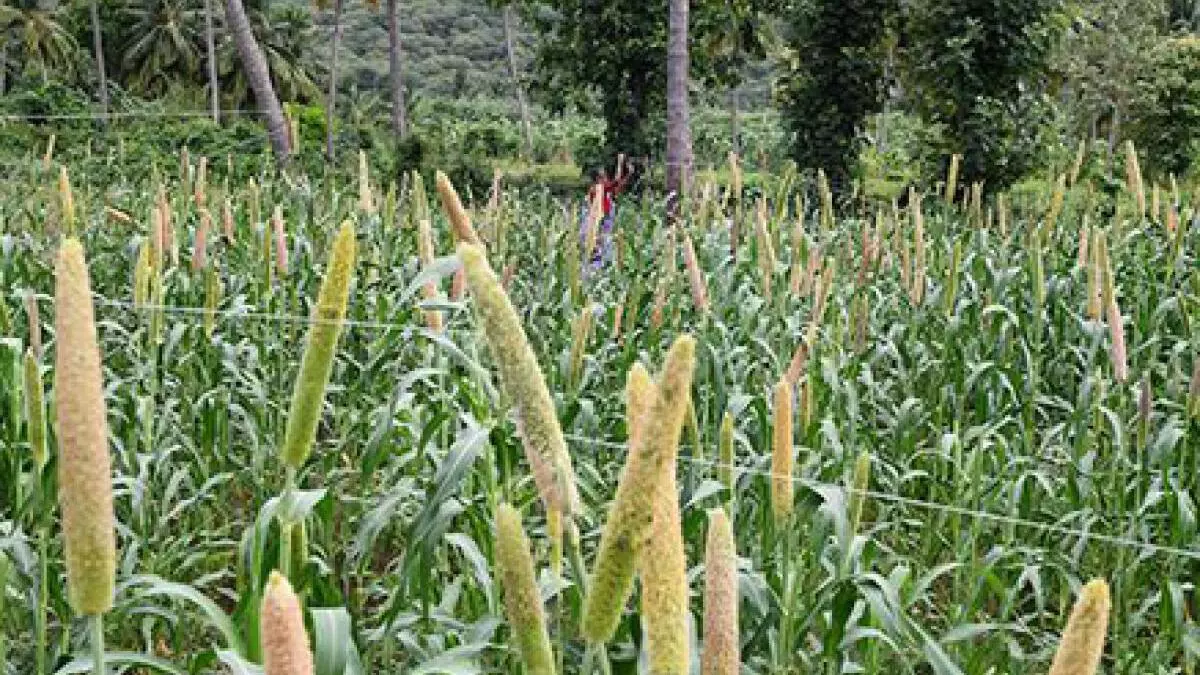How millet cultivation can tackle the challenges of food security issues
The United Nations declared 2023 the International Year of Millet, at the suggestion of India. Global agri-food systems face multiple challenges in producing food for an ever-growing global population.
In such a scenario, elastic grains like millet They provide an affordable and nutritious option, and efforts should be increased to promote their cultivation. Millet can play an important role and contribute to collective efforts to empower small-scale farmers, achieve sustainable development, end hunger, adapt to climate change, enhance biodiversity, and transform agri-food systems.
Millet could really address worldwide food security issues, as it is nutritionally superior to wheat and rice, due to its higher protein levels and more balanced amino acid profile. They also contain several phytochemicals that have healing properties due to their anti-inflammatory and antioxidant properties. Moreover, millet grains are rich sources of nutrients such as carbohydrates, protein, dietary fiber, and high-quality fats. Minerals such as calcium, potassium, magnesium, iron, manganese, zinc and B-complex vitamins.
Less water is required
Added to this, millet requires very little water for production and has a short growth period under dry, high-temperature conditions, making it suitable for dry and semi-arid regions. Millet uses 70 percent less water than rice; grows in half the time as wheat; And it takes 40% less power to process. They are used for food and fodder. Therefore, they have a strong economic meaning in mixed farming systems in India. In addition, millet sequesters carbon, which adds to the opportunities for carbon dioxide reduction, which contributes to the improvement of agrobiodiversity through its rich varietal diversity, allowing for mutual benefits with other vital crops.
Millet used to be an integral part of the Indian food system, but due to the push for food security through the Green Revolution in the 1960s, the production and consumption of millet gradually declined over time. Before the Green Revolution, millet made up about 40 percent of all grains grown, which has dropped to about 20 percent over the years. According to the Ministry of Agriculture and Farmers Welfare, until the 1965-1970 time frame, millet cereals made up 20% of our food grain basket but have now fallen to 6%. Between 2013-14 and 2021-22, production of major millets such as bajra, guwar and ragi combined decreased by 7 percent to 15.6 million tons.
However, recognizing the huge potential of millet, which is also aligned with several United Nations Sustainable Development Goals (SDGs), the Government of India (Gol) has given priority to millet. In April 2018, the millet grain was renamed as ‘Nutri Cereals’ and the United Nations General Assembly declared 2023 as the International Year of Millet in March 2021. It pushed India to recognize the importance of millet and create local and global demand besides providing nutritious food to the community.
stimulate interest
Prime Minister Narendra Modi also shared his vision of making the International Year of Millet (IYM) 2023 a “people’s movement” along with positioning India as the “global hub of millet”. This has led to increased interest in millet among various stakeholders such as farmers, youth and civil society and prompted governments and policy makers to prioritize the production and trade of this grain.
The Ministry of Rural Development (MoRD) through Deendayal Antyodaya Yojana – National Rural Livelihood Mission (DAY-NRLM) has made great efforts to increase millet production all over India. The main interventions were the transfer of improved last-mile technologies to enhance production, provision of good quality seeds through convergence and strengthening of seed banks, provision of financing through revolving funds (RF) and community investment funds (CIF) to take up millet production and post-harvest processing, promotion of value-added millet products to increase their market attractiveness and camp management and other activities to promote millet consumption in local areas. All these efforts have led to an increase in millet production and consumption in India.
(The author is Integrator, PRADAN)
